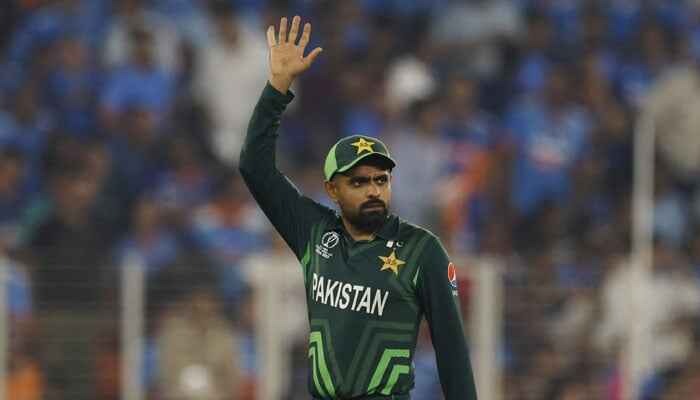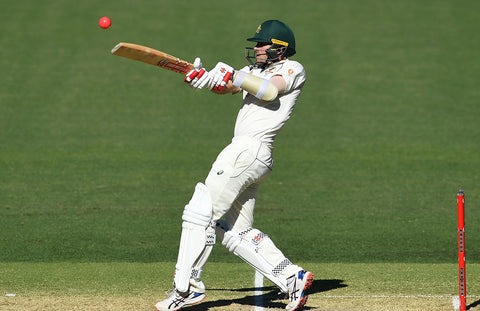Game Plan: Inside the Strategic Mind of a T20 Cricket Captain
T20 cricket is a whirlwind. It’s fast, explosive, and electrifying, often decided in a handful of overs, or even a single boundary. While the batters smashing sixes and the bowlers taking breathtaking wickets grab the headlines, there’s a silent architect working behind the scenes, making split-second decisions that can swing the game’s momentum: the T20 cricket captain.
The role of a T20 captain is far more than just leading the team out. It’s a high-pressure, strategic art form, blending meticulous pre-planning with dynamic, on-field adaptability and decisive leadership. This article offers a unique look into the strategic mind of a T20 cricket captain, breaking down the crucial decisions they make before and during a match. Get ready to appreciate the game with new eyes as we uncover the intricate tactics and calm composure required to lead a team to victory in cricket’s shortest, most exhilarating format!
The Unique Challenges of T20 Captaincy (The Pressure Cooker)
T20 cricket presents a captain with specific hurdles that make it different from other formats:
- Speed & Intensity: Everything happens incredibly fast. There’s very little time for lengthy discussions or reflection between deliveries. Decisions need to be made in an instant.
- High Risk, High Reward: The format demands aggressive play from both batters and bowlers. Captains must encourage this while managing the inherent risks.
- Momentum Swings: A T20 game can turn on its head in just one or two overs. An expensive over or a quick burst of boundaries can shift the entire balance, forcing the captain to react immediately.
- Limited Resources: Bowlers can only bowl a maximum of 4 overs each (out of 20 total). This means the captain has to manage their bowling options very carefully, often having to make tough choices about who bowls when.
- Player Psychology: In such a high-pressure environment, the captain needs to keep players motivated, calm, and confident, especially when things go wrong (like a dropped catch or an expensive over).
Pre-Match Blueprint: Setting the Stage for Success
A T20 captain’s work begins long before the first ball is bowled. Thorough preparation is key to building a strong foundation for the match.
- Pitch Analysis: The captain will closely examine the pitch (the central strip where the bowling and batting happen). Is it dry and dusty (favoring spinners)? Green and fresh (favoring fast bowlers)? Is it a flat, bouncy pitch (good for batting)? Will dew be a factor later in the evening (making it harder for bowlers to grip the ball)?
- Why it’s important: The pitch dictates the entire game plan – how many fast bowlers or spinners to play, and whether to bat or bowl first.
- Opposition Analysis: The captain, often with the coach, will study the opposing team in detail.
- Key Batters: Who are their biggest run-scorers? What are their preferred shots? What are their weaknesses (e.g., struggle against spin, uncomfortable with short balls)?
- Key Bowlers: Who are their main wicket-takers? What are their variations (slower balls, yorkers, bouncers)?
- Match-ups: Identifying specific player matchups. For example, “Batter A struggles against leg-spin, so Bowler B might be a good option against them.”
- Team Selection: Based on the pitch, opposition, and overall team balance, the captain helps select the best 11 players. This might involve tough choices between a specialist batter or an extra all-rounder (a player good at both batting and bowling), or between different types of bowlers.
- Identifying Key Match-ups: The captain thinks about specific moments in the game:
- Which bowler will bowl to which key batter?
- Which batter will be sent in if a quick wicket falls?
- How to counter the opposition’s dangerous players.
- The Toss (A Crucial Decision): The captain wins or loses the coin toss, deciding whether to bat first or bowl first. This is a huge decision!
- Considerations:
- Pitch Condition: Will it change over the match (e.g., get slower)?
- Dew Factor: If dew makes the ball wet later, bowling second becomes very difficult.
- Chasing History: Does the ground favor teams batting first or chasing a target?
- Ground Dimensions: Are the boundaries shorter on one side, favoring certain batters or bowling lines?
- Team Strength: Is the team better at setting a target or chasing one down?
- Considerations:
On-Field Masterclass: Dynamic Decision-Making (Core Strategies)
Once the match begins, the captain’s strategic mind is in constant motion, making dynamic decisions that adapt to every ball.
- Field Placements: The Invisible Web The captain strategically positions the 10 fielders (excluding the bowler and wicket-keeper) around the ground. This is like setting up an invisible web to catch the ball or stop runs.
- How the captain executes it: Before each bowler’s over, and often after each ball, the captain will signal fielders where to stand.
- Why it’s important in T20: Field placements are crucial for restricting boundaries, blocking singles, and creating opportunities for catches. An “attacking” field might have many close-in fielders to put pressure and take wickets, while a “defensive” field spreads fielders out to save runs.
- Example: Bringing a fielder close to the bat (e.g., at “slip” or “gully”) when a new batter comes in, hoping for an early edge. Or spreading fielders on the boundary when a batter is hitting big sixes.
- Bowling Changes: The Right Man at the Right Time With only 20 overs and bowlers restricted to 4 overs each, bowling changes are critical. The captain must decide who bowls, when, and from which end.
- How the captain executes it: Rotating fast bowlers and spinners, bringing in a bowler who has a good record against the current batter, or saving key bowlers for specific “pressure” overs (like the death overs).
- Why it’s important in T20: The right bowling change can break a batting partnership, slow down the run rate, or take a crucial wicket, completely changing the game’s momentum.
- Example: Bringing on a spinner when the pitch is dry and showing signs of turn, or bringing back a specialist death bowler in the final overs.
- Powerplay Strategy (First 6 Overs): The Aggressive Start The first 6 overs are called the “Powerplay,” where only two fielders are allowed outside a close 30-yard circle. This offers great scoring opportunities for batters and wicket-taking opportunities for bowlers.
- How the captain executes it:
- Batting: Encouraging aggressive hitting and taking risks to score quick runs.
- Bowling: Using aggressive, wicket-taking bowlers (often fast bowlers) with attacking field placements, knowing boundaries might be leaked but wickets are vital.
- Why it’s important in T20: A strong start in the Powerplay (with bat or ball) sets the tone for the entire innings.
- How the captain executes it:
- Middle Overs Management (Overs 7-15): Building Pressure These overs often involve spinners or medium-pace bowlers. The focus shifts from outright attack to building pressure.
- How the captain executes it: Using spinners to tie down batters and create doubts. Setting slightly more defensive fields to restrict singles and force mistakes. Looking for opportunities to break partnerships.
- Why it’s important in T20: The middle overs are crucial for preventing the opposition from building a huge score or for maintaining a good run rate when batting. Wickets here slow down momentum.
- Death Overs Tactics (Overs 16-20): The Final Assault These are the final, most crucial overs, where batters go for broke and bowlers try to prevent boundaries.
- How the captain executes it: Using their most experienced and skilled bowlers, especially those good at bowling yorkers (balls aimed at the batter’s feet) or slower balls (deceptive deliveries). Fielders are placed mostly on the boundary to save runs, with specific positions like long-on, long-off, and fine leg.
- Why it’s important in T20: These overs decide the game. Batters try to maximize runs, and bowlers try to minimize them and take wickets under immense pressure.
- Reading the Batter & Game Situation: Adapting on the Fly A T20 captain must constantly observe and adapt.
- Reading the Batter: Is a batter struggling against a certain type of bowling? Are they looking aggressive or defensive?
- Game Situation: What is the required run rate? How many wickets are left? Is it a good time to take a calculated risk or play safe?
- How the captain executes it: Making rapid adjustments to field placements, bowling changes, and even changing the batting order on the fly.
- Why it’s important in T20: T20 is so dynamic that pre-match plans often need to be quickly adjusted based on how the game unfolds.
Leading from the Front: The Captain’s Soft Skills
Beyond the tactical board, a T20 captain needs strong leadership qualities:
- Communication: Clear, calm, and concise instructions to bowlers and fielders, especially under pressure.
- Motivation & Support: Encouraging players, building confidence, especially after mistakes like a dropped catch or an expensive over. They are the emotional anchor for the team.
- Composure Under Pressure: Remaining calm and decisive when the opposition is scoring fast or wickets are falling. Their calm exterior can reassure the team.
- Instinct & Gut Feeling: Sometimes, the best decisions come from instinct, a “gut feeling” developed through experience, especially when data or pre-planning isn’t enough.
- Handling Tough Moments: The captain must be able to rally the team and devise a new plan quickly when things go wrong.
Conclusion: The Unsung Hero of T20 Cricket
T20 cricket captaincy is a high-stakes, adrenaline-fueled strategic art form. It’s a dynamic blend of meticulous pre-match planning, split-second tactical brilliance on the field, and inspiring leadership off it. The captain isn’t just a player; they are the general, orchestrating every move to gain an advantage in a game where momentum can shift on a single ball.
Next time you watch a T20 match, try to look beyond the individual heroics. Watch the captain. Observe their field placements, anticipate their bowling changes, and try to understand the strategic reasons behind their decisions.





Leave a Reply